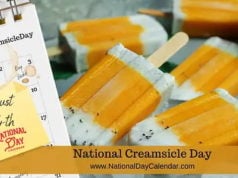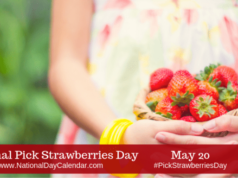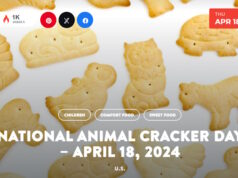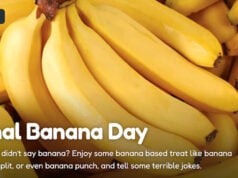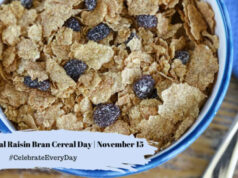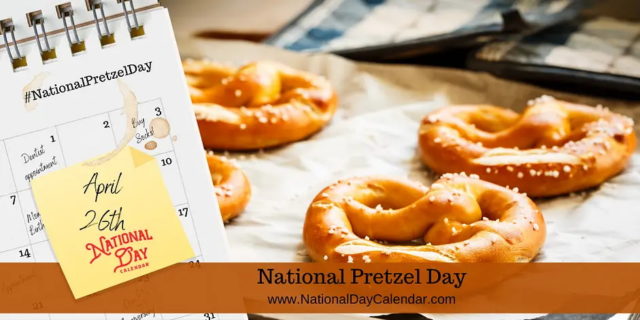
National Pretzel Day on April 26th recognizes one of America’s favorite snacks. A bag of nice crunchy, salty pretzels or a big, warm, soft, cinnamon pretzel is the question of the day. Either one is an excellent choice.
There are a few different accounts of the origin of the pretzel. Most people agree that it does have a Christian background, and they were developed by the monks.
- According to The History of Science and Technology, in 610 AD, “an Italian monk invents pretzels as a reward to children who learn their prayers. He calls the strips of baked dough, folded to resemble arms crossing the chest, pretiola (little rewards).”
- Another source puts the invention in a monastery in southern France. The looped pretzel may also be related to a Greek Ring bread from the communion bread used in monasteries a thousand years ago.
- In the Catholic Church, pretzels had a religious significance for both ingredients and shape.
- The Pennsylvania Dutch immigrants introduced pretzels to North America in the 19th century. At this time, many handmade pretzel bakeries populated central Pennsylvania, and their popularity quickly spread.
- It was in the 20th century that soft pretzels became very popular in areas such as Philadelphia, Chicago, and New York.
- The average Philadelphian consumes about twelve times as many pretzels as the national average.
- Pennsylvania is the center of American pretzel production for both hard and soft pretzels, producing 80% of the nation’s pretzels.
- The average American consumes about 1.5 pounds of pretzels per year.
- Philadelphia opened a privately run “Pretzel Museum” in 1993. (Temporarily Closed)
- Hard pretzels originated in the United States in 1850.
- In 1861, pretzel twisting was the second highest-paying job in the Philadelphia region. Today, machines do the twisting, although at some artisan shops, tourists can still see it done the old-fashioned way.
- In the 18th century, German children would wear pretzel necklaces at the beginning of a new year for prosperity, health and good fortune.
- In the 17th century, pretzels were known as a marriage knot. Pretzel legend has it that in 1614 in Switzerland, royal couples used a pretzel in their wedding ceremonies (similar to how a wishbone might be used today) to seal the bond of matrimony, and this custom may have been the origin of the phrase “tying the knot.”
- Perhaps because of its religious roots, the pretzel has long been considered a good-luck symbol. German children wear pretzels around their necks on New Year’s Day. In Austria in the 16th century, pretzels adorned Christmas trees, and they were hidden along with hard-boiled eggs on Easter morning.
- Hard pretzels were “invented” in the late 1800s, when a snoozing apprentice in a Pennsylvania bakery accidentally over baked his pretzels, creating crunchy, seemingly inedible, knots. His job was spared when the master baker, attempting admonishment, took an angry bite out of one–and loved it.
- Until the 1930s, pretzels were handmade, and the average worker could twist 40 a minute. In 1935, the Reading Pretzel Machinery Company introduced the first automated pretzel machine, which enabled large bakeries to make 245 pretzels per minute, or five tons in a day.
- President George W. Bush was munching on a pretzel in the White House when he choked and lost consciousness while watching the 2002 Baltimore-Miami NFL playoff.
- The first pretzel to journey to America is thought to have come over on the Mayflower.
- While the pretzel shape is symbolic in origin, it is also practical. Bakers could hang them by their loops on strings and sticks, making it convenient to display.
- Pretzels have been a part of Easter traditions and were even hidden in the same way as Easter eggs.
- Pretzels are often accompanied by toppings and can also be stuffed. Popular flavors include melted cheese, mustard, caramel or icing.
- Unsalted pretzels have earned the nickname of “baldies.”
Sources:




